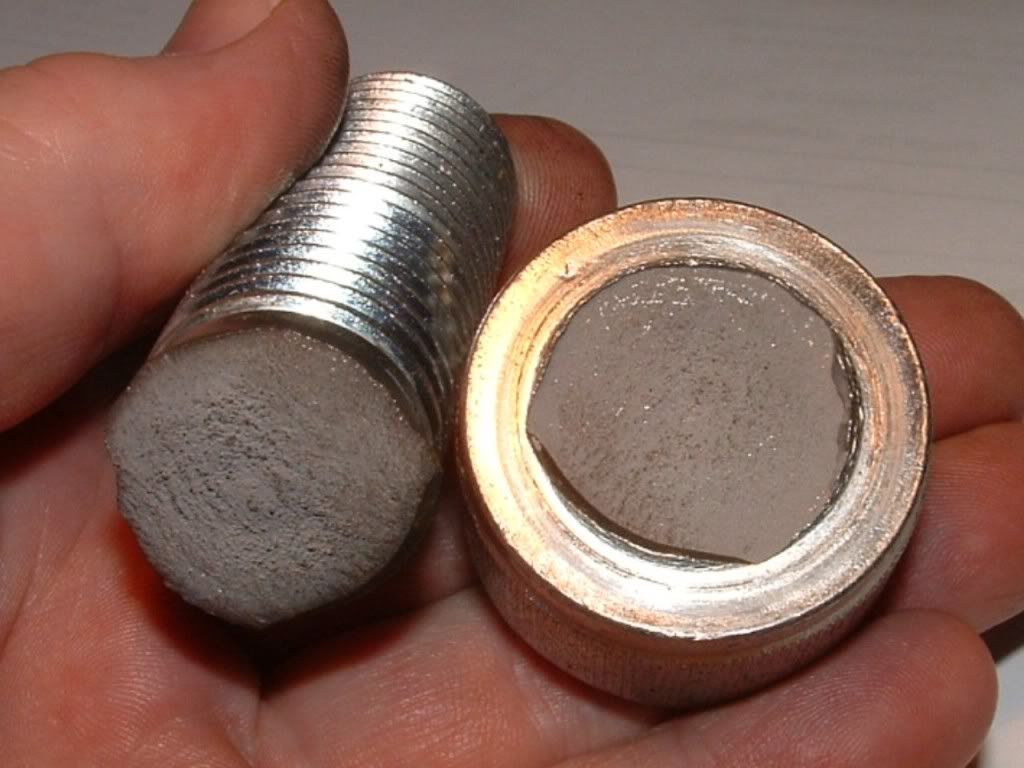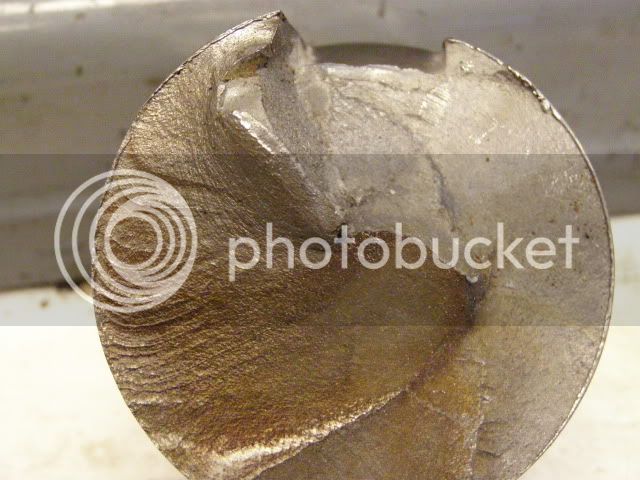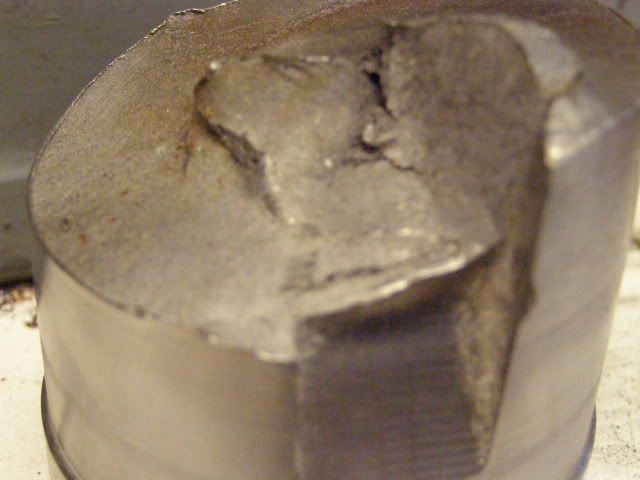An M24 Cap Screw is obviously not from a model but I thought some members might be interested.
The end of this bolt simply popped off - it is due to hydrogen embrittlement and a lap crack underside the head (manufacturing defect). It was not very highly torqued and not subject to cyclic load.

Hydrogen embrittlement occurs when the metal is exposed to nacent Hydrogen H (as opposed to H2) - which then dissolves into the solid metal - termed a solid solution.
For reasons not fully understood the Hydrogen tends to migrate to high stress points - there it will find a void or grain boundary and it will meet and pair up with another H radical to become insoluable H2.
Believe it or not this process builds enough pressure to tear the material apart - grain by grain, until failure occurs.
One of the most common causes of hydrogen embrittlement is electroplating - where nacent Hydrogen is liberated at the Cathode.
The problem gets worse with higher tensile and hardness values - spring steel is particularly susceptible.
The lesson - when electroplating parts in high tensile materials be sure to de-embrittle them propperly by heating to 250°C for 2-3 hours immediately after plating. Immediately means right after removal from the plating solution.
This bolt probably missed that process. The stress raising lap crack prompted the Hydrogen to migrate and propogate the crack further and further - I came into work and the head had popped off during the night.
Ken
The end of this bolt simply popped off - it is due to hydrogen embrittlement and a lap crack underside the head (manufacturing defect). It was not very highly torqued and not subject to cyclic load.

Hydrogen embrittlement occurs when the metal is exposed to nacent Hydrogen H (as opposed to H2) - which then dissolves into the solid metal - termed a solid solution.
For reasons not fully understood the Hydrogen tends to migrate to high stress points - there it will find a void or grain boundary and it will meet and pair up with another H radical to become insoluable H2.
Believe it or not this process builds enough pressure to tear the material apart - grain by grain, until failure occurs.
One of the most common causes of hydrogen embrittlement is electroplating - where nacent Hydrogen is liberated at the Cathode.
The problem gets worse with higher tensile and hardness values - spring steel is particularly susceptible.
The lesson - when electroplating parts in high tensile materials be sure to de-embrittle them propperly by heating to 250°C for 2-3 hours immediately after plating. Immediately means right after removal from the plating solution.
This bolt probably missed that process. The stress raising lap crack prompted the Hydrogen to migrate and propogate the crack further and further - I came into work and the head had popped off during the night.
Ken









